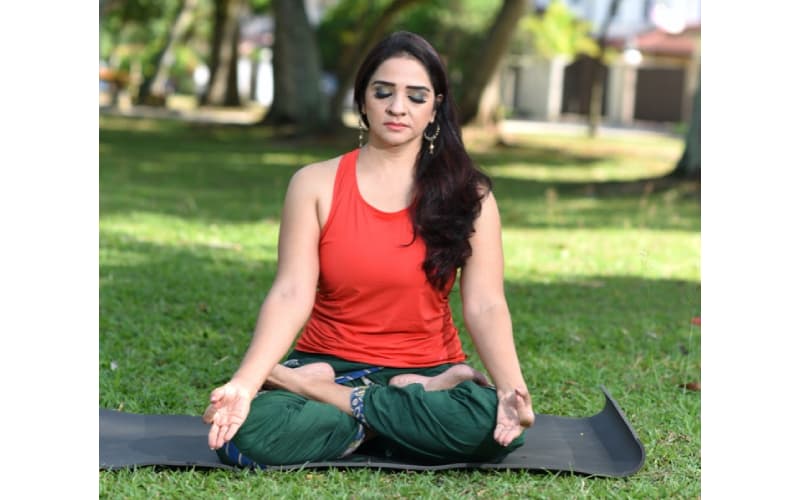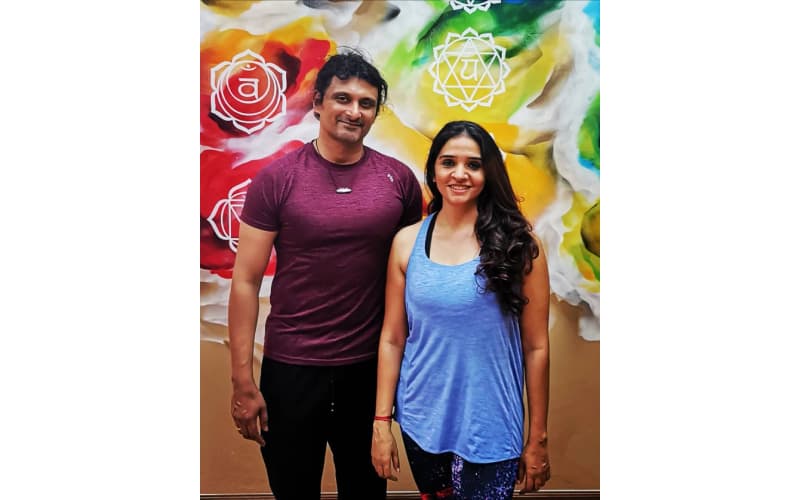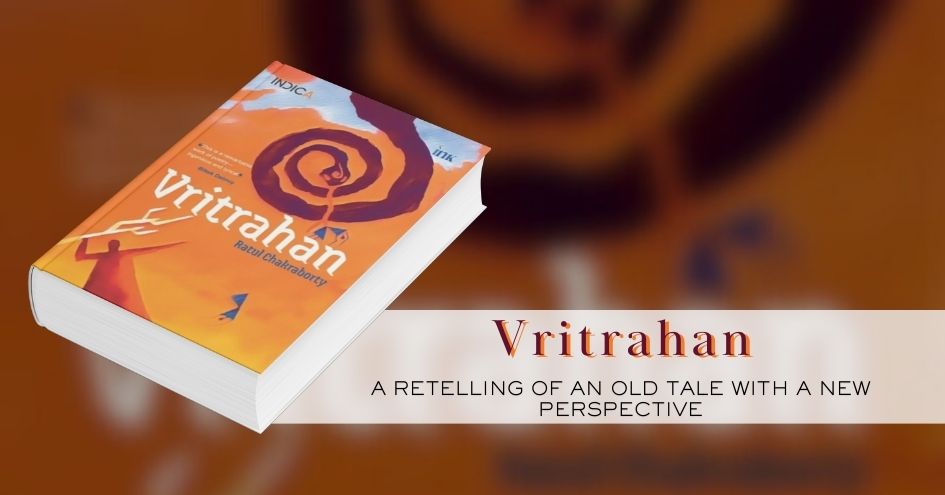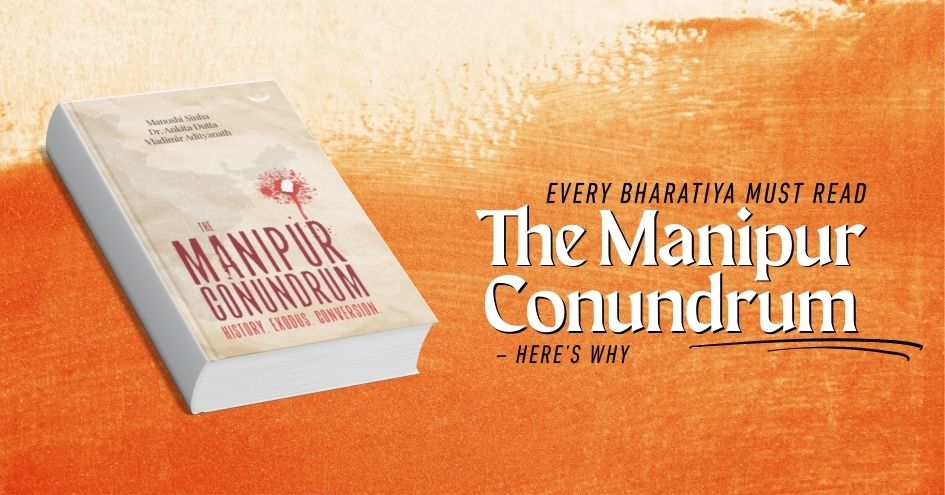
Shailaja Menon
Based on scriptures, backed by science, Meditation Demystified addresses the need of the hour, our mental wellness. It explores meditation through the context of Ashtanga Yoga or the 8-step path laid out in the Patanjali Yoga Sutras, one of the most sacred scriptures of yoga practitioners.
Yoga practices, including meditation, were initially embarked upon to address the existential questions of its practitioners. Today in its new avatar, backed by scientific evidence of mind- body-breath connection, it also offers a way to relieve its practitioners from the tyranny of their minds, leading them towards health and wellness.
We live in our minds, and the state of our minds ultimately defines the state of our lives. It is imperative, now more than ever, that we shine the light on our minds as people are plagued by mental health issues like stress, anxiety, depression and insomnia. The greatest challenge we face in our lives is not outside of ourselves but in our mind’s movements. Its reactivity, its harsh judgments, its expectations, its inability to deal with disappointments manifests as inner restlessness and lack of clarity in our lives.

The book seeks to provide answers through the yoga practice; a journey that connects us to our own inner selves. We begin to understand what truly moves us, what inspires us, what our lives are about, what brings us satisfaction, what depresses us etc. And once we make that connection, we begin to lead more authentic and fulfilling lives.
The structure of the book is based on the Ashtanga Yoga; the eight limbs, as laid down by Patanjali in the Yoga Sutras.
As dhyana or meditation is the 7th limb, the focus has been on exploring the first six limbs leading to meditation. This includes yamas and niyamas (principles to be adhered to), asana (physical postures), pranayama (breath regulation), pratyahara (withdrawal of the senses), dharana (concentration) and dhyana (meditation). The book begins by laying the foundation of meditation in the context of yoga practice. This is also followed up by evidence of science-based research that backs the efficacy of a regular meditation practice on various dimensions of human existence. Each chapter thereon sequentially explores each of the limbs of the Ashtanga yoga and provides deep insight using the yoga sutras as a basis. The end of each chapter also provides exercises for the reader to get started on their own personal journey towards concentration and meditation. These techniques are based on the body, breath and chakras. The chapter on pranayama also introduces the reader to several established techniques for the reader to develop a good understanding of the various breathing practices.
With the meteoric rise in the popularity of meditation, the questions too are many; do I watch my breath? Or do I watch a flame? Do I recite a mantra? Or do I chant a verse? Is 10-minutes enough to begin with? How do I begin a gratitude practice? So, the book seeks to provide some answers to these questions.

With her teacher Manoj Kaimal
In recent times, meditation is subject to tremendous interest and on-going research both in India and the West. Breakthroughs in neuroscience now accepts the plasticity of the brain (neuroplasticity) and its growth (neurogenesis) through our every experience. The advent of neuro-imaging devices like the magnetic resonance imaging (MRI), has made it possible to quantify the effect of meditation on the brain. This is done by measuring brain wave activity, changes in size of structures of the brain and its corresponding altered emotional response in the individual.
Mind and body are seamlessly connected. We have to take responsibility for the state of our lives and health, as through the growing science of epigenetics, we can no longer continue to blame our “genes” for all our problems. This is because our genes and DNA are affected and expressed in accordance to our perception of the environment. This is not just the external environment outside of our bodies but the internal environment within our bodies; the environment outside our cells as well. Thoughts and their resulting emotions both negative and positive shape our biology. Emotions are the chemical feedback and their resulting internal chemistry can signal our gene to either turn on by up-regulating and producing an increased expression of the gene. Or it can cause it to turn off by down-regulating or producing a decreased expression of the gene. So, the conversation about health has to begin with the state of our mental health. For which, awareness of the state of our mind is key. And the book offers time-tested yogic practices that everyone can incorporate into their lives.
Conclusion
According to the World Health Organization, mental health is “a state of well-being in which every individual realizes his or her own potential, can cope with the normal stresses of life, can work productively and fruitfully, and is able to make a contribution to her or his community.”
Thus, it’s about living life being inspired, motivated, cheerful, connected and with a sense of purpose. It’s about wellness, not just about staving off illness. It’s about living our fullest potential. Meditation, is one key practice, that can make it happen and Meditation Demystified, seeks to inspire you on that path.
“The Light that yoga sheds on Life is something special. It is transformative. It does not just change the way we see things; it transforms the person who sees. It brings knowledge and elevates it to wisdom”.
Guruji B.K.S. Iyengar Light on Life
(Note: The book will be published soon.)
NEXT ARTICLE

Saiswaroopa Iyer is an author who needs no introduction. She is one of the authors who pioneered Puranic fiction in India with books exploring tales f...

Indra killed Vritra using his Vajra. Once again, good won over evil and dharma over adharma. This is a story most Bharatiyas know. The story is a pa...

The recently-released book on Manipur titled The Manipur Conundrum – History. Exodus. Conversion. – is the result of tiring efforts by three Bharatiya...